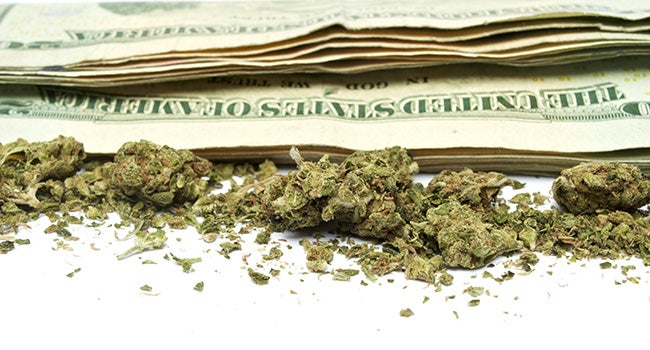CLOSER LOOK: Studies show benefits, downsides of recreational marijuana
Published 8:00 am Friday, July 7, 2017
As Michigan prepares for the changes to its medical marijuana industry — and possible decision to legalize the substance recreationally — parts of the country that have already made the decision to “go green” are raking in green(backs) themselves.
In some cases, they are also paying for it.
In 2012, Washington and Colorado became the first states in the country to legalize recreational use of marijuana, following the passage of ballot initiatives during the general election that year. Two years later, voters in Alaska and Oregon followed suit, and in 2016 another four states — California, Nevada, Maine and Massachusetts — also legalized recreational use of the drug, all through ballot initiatives.
While the marijuana industry is still in the infancy in states that legalized marijuana since 2014, Colorado and Washington have served as a test tube for the effects that a regulated marijuana industry has on its citizens, in terms of financial impact and public safety.
Grass means cash
Among the groups eyeing these studies is the National Organization for the Reform of Marijuana Laws, a nonprofit dedicated to marijuana advocacy. The organization, which is headquartered in Washington, D.C., with regional affiliates located across the country, was one of the main groups that spearheaded the push for Amendment 64, the ballot proposal that paved the way for legalization in Colorado.
Although the push for recreational use came to a head with the 2012 initiative, which passed by 11 points, the battle for legalization had raged for years, with sporadic successes and failures at the municipal level in the state, including legalization in Denver in 2005.
For advocates with NORML, the case for allowing open use of the drug hinged on a simple premise, of bringing a trade that has existed for decades from the underground into the light. The goal was to end prohibition-style enforcement of marijuana and instead have governments see it the same way they see alcohol: as a substance only adults may consume and that only licensed businesses may sell to customers.
“This wasn’t about allowing a marijuana free-for-all,” said Paul Armentano, deputy director with NORML. “It was about regulating a market that already exists. It was about providing oversight to transactions that take place every day and allowing governments to take a chunk of that to put to use for the public good.”
So far, bringing marijuana into the daylight appears to be paying off for the citizens of Colorado and Washington— at least in terms of dollars.
Figures from the Colorado Department of Revenue show nearly 500 licensed marijuana retail stores, and hundreds more cultivators, product manufacturers and testing facilities, open in the state as of June 1, 2017. Official figures for Washington are harder to come by, though a list of medically endorsed businesses compiled by the state liquor and cannabis board show a similar number of retail establishments operating in the state.
The public sector has also benefited from the boom in sales, as well.
According to a 2016 study by the Drug Policy Alliance, a nonprofit dedicated to ending the “war on drugs,” Colorado has earned $207 million in taxes from marijuana, well in excess of the $140 million the industry was expected to generate. Tax revenue in Washington also shattered initial expectations, bringing in $298 million compared to the projections of $162 million.
The sales taxes are not simply expanding the coffers of the state governments, either. Colorado lawmakers are using the funds to pay for school construction, marijuana enforcement and general state needs, while in Washington leaders are using the money to fund substance abuse prevention and treatment programs, youth and adult drug education, community health care services, and academic research and evaluation the drug is having on Washington residents.
Stickier issues
When it comes to societal effects of legalization, things become a bit murkier.
Opponents of marijuana legalization who argued that permitting adult use of the substance would lead to increased usage among teenagers will find little data to vindicate these claims, at least when it comes to Colorado and Washington. Recent studies by both governments found that usage rates among adolescents have either remained static or even dipped slightly since marijuana was legalized.
There are some areas where marijuana legalization has caused problems, however.
Overdoses caused by edibles, or marijuana infused food products, became a problem in Colorado during the first few years of recreational use, contributing to the death of several individuals. However, the state has enacted several changes in recent years to combat the problem, requiring packaging on such products to list its potency and contaminant testing information, as well as warnings to keep them away from children.
Employers in Washington and Colorado have also found it harder to find employees who are able to pass drug screenings, according to a recent study by Quest Diagnostics. Prospective employees in the two states demonstrated the largest growth in failure rates for cannabis from 2015 to 2016, increasing 9 percent and 11 percent, respectively.
Even in terms of financials, the impact of marijuana legalization has not been a complete success.
In spite of promises that legalization would bring an end to the era of back alley dealings, the black market for marijuana continues to thrive. In Colorado, marijuana from the state not only drives illegal sales within its borders but in other states as well. In an interview with a Denver news station this past March, officials with the Denver Police Department said they had arrested 242 people for illegally growing, selling or extracting marijuana in the city, and seized nearly $9,000 worth of the substance last year.
This problem may not be impossible to stamp out, though, Armentano said. Colorado lawmakers have passed legislation to bring the effective tax rate of marijuana sales down from 29 to 27 percent, which will hopefully drive product costs down.
“As prices go down, it will be harder and harder for the black market to compete, and that is a good thing,” Armentano said. “No one who supported marijuana regulation expected the black market problem to disappear overnight.”
In spite of these thorns, public support for legalization remains strong among the populations of the states, Armentano said. A 2015 poll commissioned by Quinnipiac University found that 58 percent of Colorado voters support continued legalization of marijuana, versus 38 percent against, while a study conducted later that year in Washington found that 58 percent of voters supported legalization compared to 37 percent against.
“Those are the big success stories coming from these states,” Armentano said. “We proved we could regulate the marijuana industry and that the sky wouldn’t fall, and in fact would be a net gain for the public.”
Concerns about the future
Public support for recreational marijuana is also growing across the U.S. A poll conducted last fall by the Pew Research Center found that 57 percent of citizens support legalization, with 37 percent showing opposition.
In spite of growing popular support, Armentano and others in NORML are not entirely optimistic about the future of legalized pot.
Even in several states where voters have recently passed ballot initiatives approving marijuana, such as Maine and Florida, the actual creation of laws and regulations surrounding marijuana use and sale have stalled in the legislature.
There is also the elephant in the room — the fact that federal laws still forbid the use and sale of marijuana. In spite of the flurry of action at the state level, lawmakers in the nation’s capitol have remained static on the issue of legalization, and, with both President Donald Trump and Attorney General Jeff Sessions expressing interest in possibly cracking down on the burgeoning marijuana industry, the problem is likely to get worse before it gets better, Armentano said.
“It’s an untenable situation, and it has to rectified,” he said.
Voters in Michigan may get the chance to decide themselves whether or not to allow recreational use of marijuana next year, as pro-marijuana advocates are pushing for a ballot proposal to legalize the drug on 2018 general election. The Michigan Board of Canvassers approved a petition from the coalition to place the initiative on the ballot, with volunteers now collecting the mandatory 250,000 signatures needed to solidify its place there next year.
Even if the measure makes the ballot, it will face opposition from many powerful groups in the state — including many in the Michigan law enforcement community.
Among those opposing legalization in the state is Cass County Prosecutor Victor Fitz. A past president of the Michigan Prosecutors Association, the prosecutor remains unconvinced that legalizing marijuana will not adversely affect teenagers and children.
Michigan is already burdened with heavy drug use, especially among youth: the state ranks sixth in the national in terms of overall drug use/addiction, 13th in terms of use on school grounds and 15th in terms of teenage drug abuse. The prosecutor also said that many of the drug cases his office handles involve adults who began using marijuana when they were teenagers.
“It’s a quality of life issue,” said Cass County Prosecutor Victor Fitz. “Do we want what is best for our kids, or do we chase an illusive dollar that may have a tremendous burden on the taxpayer?”
Fitz also expressed concern about other issues involved with expanding the marijuana industry in Michigan, including the possibility of increased robberies of grow operations or dispensaries.
With law enforcement frequently dealing with problems related to drunk driving and underage sales of alcohol, the last thing police, prosecutors and judges need to worry about is another intoxicant becoming more widely available, Fitz said.
“We already have one vice,” Fitz said. “Why do we need a second one as well?”







